Montane forest birds: breeding biology, habitat associations, and identification of nest predators
High-elevation forests in mountains of southern Arizona support a unique and diverse avian community, including populations of several species of conservation concern such as the red-faced warbler (Cardellina rubrifrons). This avian community is vulnerable to disturbance because the area encompassed by montane forests represents only a small fraction of the total landmass of the region. Moreover, the highest densities of many breeding birds species are concentrated in a relatively small number of high-elevation, steep-sided drainages.
In recent years the potential for disturbance to these important breeding areas has increased. For example, the frequency of large, often severe wildfires has increased in montane forests of southeastern Arizona. In addition, recreational use in some mountain ranges (e.g., the Santa Catalina Mountains) has the potential to adversely affect the reproductive success of a large number of birds because peaks in recreational use coincide temporally and spatially with peaks in breeding bird activity. Birds such as red-faced warblers and yellow-eyed juncos (Junco phaeonotus) may be especially vulnerable to these disturbances because they nest on the ground.
In light of these potential threats, we need additional information about montane forest birds to better manage and conserve this unique avian community. Studies have been conducted to determine the distribution and abundance of montane forest birds in Southeastern Arizona. However, relatively few studies have examined the breeding biology (clutch size, number of nesting attempts, etc.) or measured nesting success for populations of these species. Moreover, few studies have attempted to correlate reproductive success with variation in habitat quality or identify common nest predator species. To address these issues, we have initiated a long-term study of breeding populations of montane forest birds in the Santa Catalina Mountains of southeastern Arizona.
Each year during the breeding season (April-July), we monitor nests and record nest-site characteristics for all breeding birds within 4 study plots located between the 2 highest summits in the Santa Catalina Mountains, Mount Lemmon (2,791 m elevation) and Mount Bigelow (2,606 m elevation). We also use time-lapse video cameras to monitor yellow-eyed junco (Junco phaeonotus) and red-faced warbler nests to identify common nest predators of ground-nesting birds. Results from this study will provide wildlife managers with important information to better conserve breeding birds in the Santa Catalina Mountains and elsewhere in the southwestern U.S.
Funding for this research has been provided by the Arizona Bird Conservation Initiative, T and E, Inc., and the University of Arizona. We thank the numerous technicians and volunteers who have collected data over the years on this project.
- See video of woodrat (Neotoma) depredation of a yellow-eyed junco nest (link currently under construction).
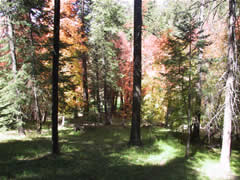
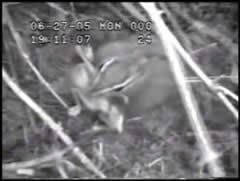
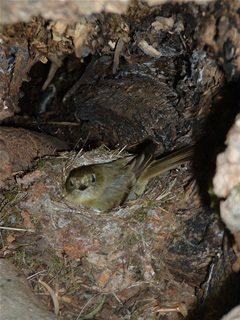
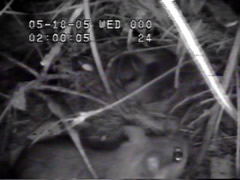
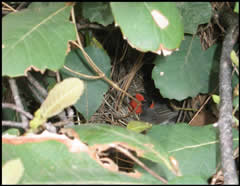



Publications:
Presentations:
- Kirkpatrick, C., C. J. Conway, and M. Ali. 2006. "Video identification of nest predators of ground-nesting forest birds in southeastern Arizona". Arizona-Nevada Academy of Sciences annual meeting, Tucson, Arizona. Paper presentation.